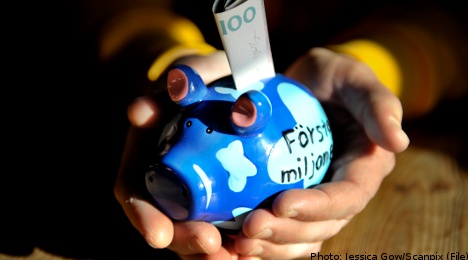Following recent attention on the gap between banks’ mortgage rates and Sweden’s benchmark interest rate, the government on Thursday tasked the Swedish Financial Supervisory Authority (Finansinspektionen) with taking a closer look at the margins banks’ are earning on their variable rate mortgages.
One possible reform under consideration is the option of allowing bank customers to take their old account numbers with them when changing banks.
“It would make things easier and more practical. I’d like customers to become more active, and if we can help with that, we should,” said Peter Norman to news agency TT.
As many Swedes pay most of their bills and receive their salaries via direct, electronic deposits into their accounts, switching banks can bring with it an added degree of administrative burden for the customer.
Keeping one’s account number, however, would help relieve some of the hassle, Norman believes.
He explained that one of the most important factors for putting pressure the bank profits derived from margins on home mortgages is by increasing competition through making it easier for people unhappy with their current bank to switch to a different one.
“Yes, I do think so. Today it’s seen as a complicated process,” he said.
The possibility of customers keeping their old account number when switching banks was not popular among Sweden’s banks, however.
“It’s not of much use to customers, who don’t actually need to memorize their number,” said Marie-Louise Ulfward, lawyer at association Swedish Bankers (Bankföreningen). to TT.
According to Ulfward, the use of such a reform is unproportional to what it would cost to implement.
“It would be a huge cost to the financial system,” she said.
There are roughly 40 million bank accounts, and all these numbers would have to be changed in all customer databases before any of them could be moved.
Studies have shown that financial crises are possibly the most devastating form of crisis to hit a country, wrote Peter Norman in a debate article published in national newspaper Expressen on Thursday.
“They make their way from banks and into households and companies, putting important socioeconomic functions such as saving and loan opportunities out of play,” he wrote.
Because of this, Sweden’s centre-right government has suggested higher capital requirements for the country’s four major banks. This means raising the amount of money banks must have to cover withdrawals at any given moment.
Finance minister Anders Borg said on Wednesday that he expects banks to lower their margins on mortgages by lowering mortgage rates, since all indications point towards the economy braking heavily.
“The banks are going to have a tough time next year if they don’t start bringing margins down now, it’s unacceptable that they remain on the levels they’re at now,” said Borg to TT.




 Please whitelist us to continue reading.
Please whitelist us to continue reading.
Member comments